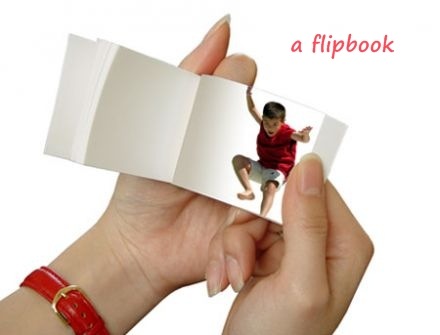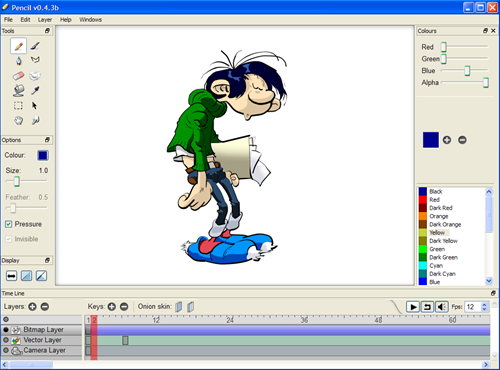When I was young, I used to make simple flipbook animations making use of the empty margins on pages of text books to draw sketches. The figures differed slightly from each other and when flipped through the pages with the thumb, it created the illusion of motion. It was fun.

Today, there are a number of sophisticated animation software with many advanced features that make animation easier but at the same time, they make the software harder to master. Most casual users do not want to or motivated enough to learn a complex animation software. They just want to have some fun.
If you are one of them, try Pencil - a free 2D animation software that brings back the traditional flip book technique of animation to the digital world.
Pencil doesn’t have a lot of tools, just a simple drawing toolbox with the usual tools like brush, pencil, coloring tool, eraser and the like. There is a color selection tool, pen width tool, a layer tool and simple timeline at the bottom.
Just like a flipbook, you have to draw each frame by hand. No keyframe animation, which is such a shame, but you can copy and paste your drawings to subsequent frames and make changes to it. Pencil supports both bitmap and vector drawing and you can make your sketch in either of the two. When you have completed drawing the first frame and move to the next, the previous frame is shown in semi-transparency to guide the drawing of the current frame.
The size and shape of the viewing window can be defined using the camera layer, and you can even add music to your animation using the sound layer. The final creation can be exported as a single image or sequence of images, depending on whether there is one frame or many, as a flash movie or in the .MOV format.
A simple animation movie made using Pencil
The limitations in Pencil make it impossible to use it in feature length animation movies. But Pencil isn’t trying to compete with professional tools. Rather, Pencil is trying to reach the masses and make creating animation an enjoyable task.
On the other hand if you looking for a better, free animation tool then you can try the previously mentioned Synfig and Liveswif.


Comments
Post a Comment